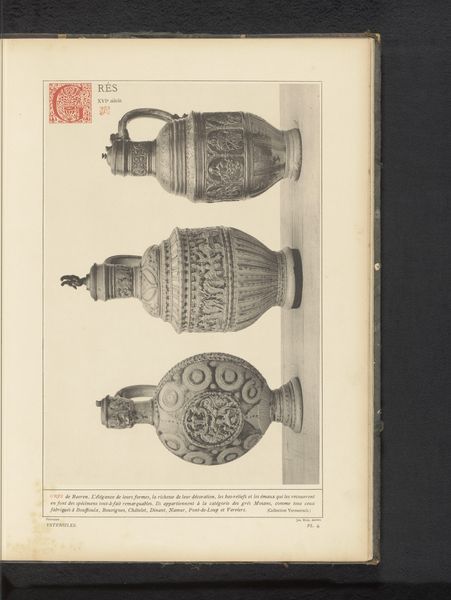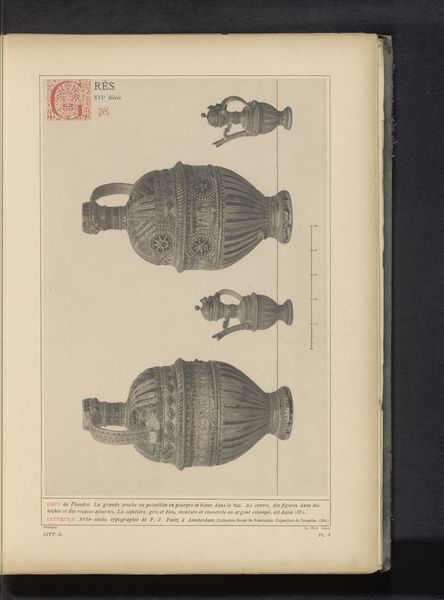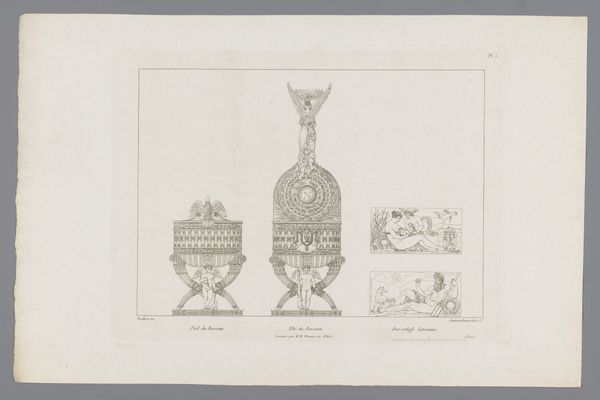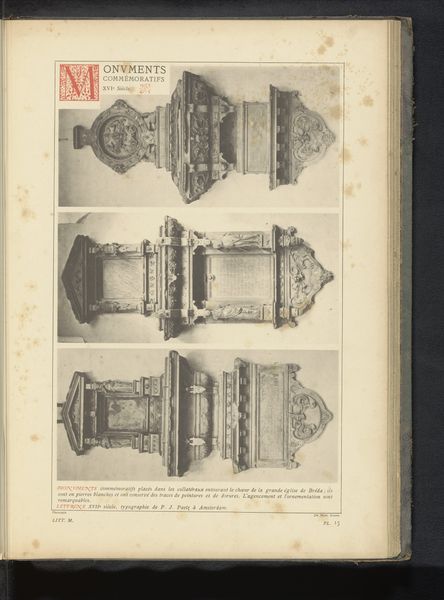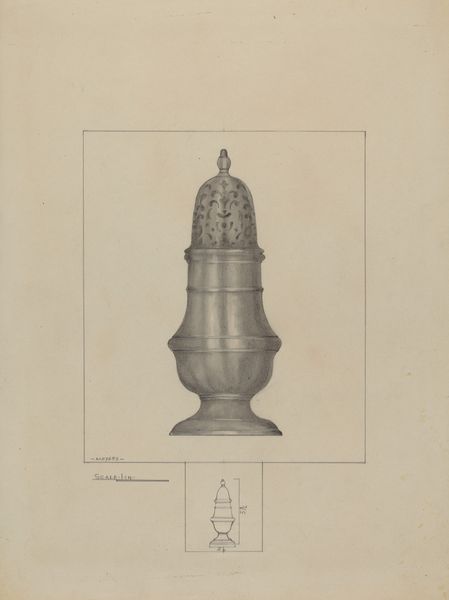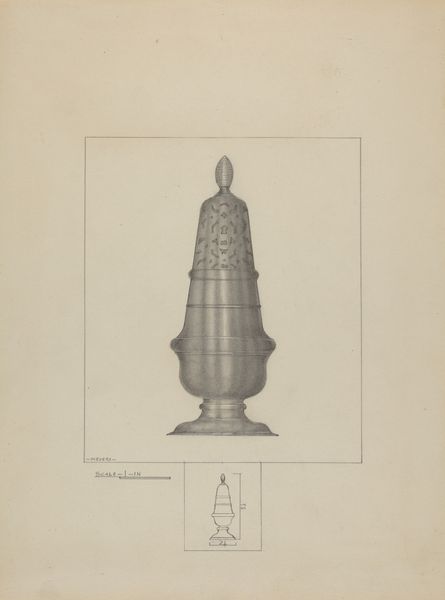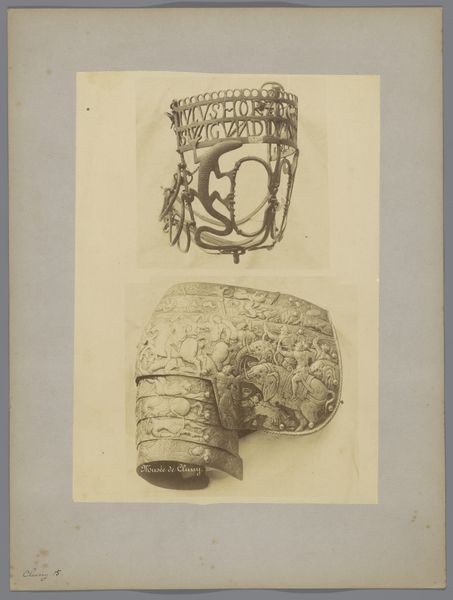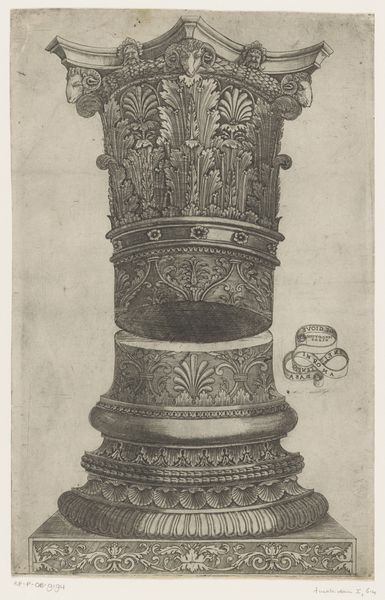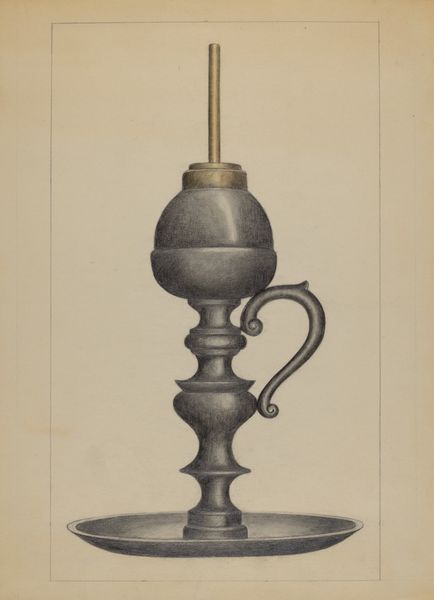
print, ceramic
# print
#
ceramic
#
vase
#
islamic-art
#
decorative-art
Dimensions: height 188 mm, width 272 mm
Copyright: Rijks Museum: Open Domain
Editor: Here we have a print of *Drie kannen van keramiek*, or Three Ceramic Jugs, dating to before 1887. It’s presented in a book or catalogue of some kind. I’m immediately struck by the precision of the rendering. What’s your take on this, in terms of how these ceramic forms translate into print? Curator: It's interesting, isn't it? These prints, seemingly objective, are full of the artist’s presence. Look at the variation in the lines. It is, I suppose, more of a translation of form and texture. One could see it as a kind of loving act, tracing the curves, and celebrating the skill of the original ceramicist. I love the almost reverent way each detail is attended to! What do you think it communicates to a contemporary viewer? Editor: I think it demonstrates a dedication to craft and a reverence for objects from a different culture. I wonder though, what purpose did images like this serve at the time? Were they purely archival or did they serve another function? Curator: Ah, that’s the puzzle, isn't it? Given the style, with what looks like careful cataloging and detailed rendering, perhaps the intention was pedagogical: disseminating knowledge of different ceramic styles and ornamentation. You see how motifs get circulated and reimagined over time. Isn't that exciting? Editor: Absolutely! Seeing the artistic journey and the evolution of design is incredible. It makes you wonder where these motifs and styles ended up, how they transformed over time! Thanks for pointing this out, I see much more life in this piece now.
Comments
No comments
Be the first to comment and join the conversation on the ultimate creative platform.
